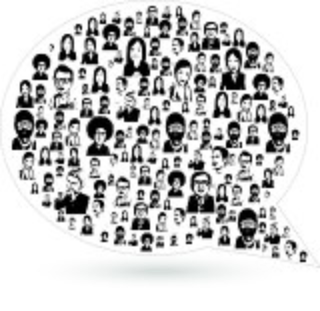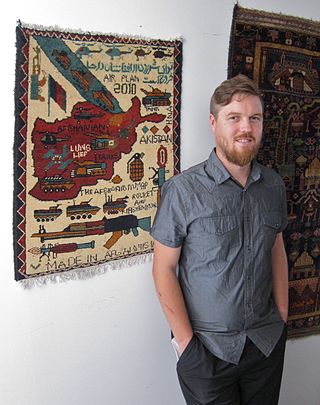Related Research Articles

Humanitarianism is an ideology centered on the value of human life, whereby humans practice benevolent treatment and provide assistance to other humans to reduce suffering and improve the conditions of humanity for moral, altruistic, and emotional reasons.

OpenStreetMap is a free, open geographic database updated and maintained by a community of volunteers via open collaboration. Contributors collect data from surveys, trace from aerial imagery and also import from other freely licensed geodata sources. OpenStreetMap is freely licensed under the Open Database License and as a result commonly used to make electronic maps, inform turn-by-turn navigation, assist in humanitarian aid and data visualisation. OpenStreetMap uses its own topology to store geographical features which can then be exported into other GIS file formats. The OpenStreetMap website itself is an online map, geodata search engine and editor.

Crowdsourcing involves a large group of dispersed participants contributing or producing goods or services—including ideas, votes, micro-tasks, and finances—for payment or as volunteers. Contemporary crowdsourcing often involves digital platforms to attract and divide work between participants to achieve a cumulative result. Crowdsourcing is not limited to online activity, however, and there are various historical examples of crowdsourcing. The word crowdsourcing is a portmanteau of "crowd" and "outsourcing". In contrast to outsourcing, crowdsourcing usually involves less specific and more public groups of participants.
Collaborative mapping, also known as citizen mapping, is the aggregation of Web mapping and user-generated content, from a group of individuals or entities, and can take several distinct forms. With the growth of technology for storing and sharing maps, collaborative maps have become competitors to commercial services, in the case of OpenStreetMap, or components of them, as in Google Map Maker, Waze and Yandex Map Editor.
Ushahidi is an open source software application which utilises user-generated reports to collate and map data. It uses the concept of crowdsourcing serving as an initial model for what has been coined as "activist mapping" – the combination of social activism, citizen journalism and geographic information. Ushahidi allows local observers to submit reports using their mobile phones or the Internet, creating an archive of events with geographic and time-date information.
Citizen sourcing is the government adoption of crowdsourcing techniques for the purposes of (1) enlisting citizens in the design and execution of government services and (2) tapping into the citizenry's collective intelligence for solutions and situational awareness. Applications of citizen sourcing include:
The Christchurch Recovery Map, also known as eq.org.nz, was a short-lived website providing crowdsourced information about the Christchurch earthquake of 22 February 2011. The site aggregated information via email, tweets with an #eqnz hashtag, SMS and a locally hosted web form. The site was built with open source tools and active support from CrisisCommons and Ushahidi.

Juliana Rotich is a Kenyan information technology professional, who has developed web tools for crowdsourcing crisis information and coverage of topics related to the environment. She is the co-founder of iHub, a collective tech space in Nairobi, Kenya, and of Ushahidi, open-source software for collecting and mapping information. She is a TED Senior Fellow.
Relief 2.0 or disaster relief 2.0 is the deployment of digital information techniques in the management of disaster relief.

Crisis mapping is the real-time gathering, display and analysis of data during a crisis, usually a natural disaster or social/political conflict. Crisis mapping projects usually allows large numbers of people, including the public and crisis responders, to contribute information either remotely or from the site of the crisis. One benefit of the crisis mapping method over others is that it can increase situational awareness, since the public can report information and improve data management.

The Digital Humanitarian Network is a consortium allowing Volunteer and Technical Communities (V&TCs) to interface with humanitarian organizations that seek their services.
Government crowdsourcing is a form of crowdsourcing employed by governments to better leverage their constituents' collective knowledge and experience. It has tended to take the form of public feedback, project development, or petitions in the past, but has grown to include public drafting of bills and constitutions, among other things. This form of public involvement in the governing process differs from older systems of popular action, from town halls to referendums, in that it is primarily conducted online or through a similar IT medium.
Sensor journalism refers to the use of sensors to generate or collect data, then analyzing, visualizing, or using the data to support journalistic inquiry. This is related to but distinct from data journalism. Whereas data journalism relies on using historical or existing data, sensor journalism involves the creation of data with sensor tools. This also includes drone journalism.

Missing Maps is a humanitarian mapping initiative between a group of organizations that aim to map parts of the world that are vulnerable to natural disasters, conflicts, and disease epidemics. It was founded in November 2014 by the American Red Cross, British Red Cross, Humanitarian OpenStreetMap Team, and Médecins Sans Frontières/Doctors Without Borders and has so far mapped large towns, cities and rural areas in countries such as South Sudan, the Democratic Republic of the Congo, and the Central African Republic.
All Partners Access Network (APAN), formerly called Asia-Pacific Area Network, is a United States Department of Defense (USDOD) social networking website used for information sharing and collaboration. APAN is the premier collaboration enterprise for the USDOD. The APAN network of communities fosters multinational interaction and multilateral cooperation by allowing users to post multimedia and other content in blogs, wikis, forums, document libraries and media galleries. APAN is used for humanitarian assistance and disaster relief, exercise planning, conferences and work groups. APAN provides non-governmental organizations (NGOs) and U.S. partner nations who do not have access to traditional, closed USDOD networks with an unclassified tool to communicate.
Artificial Intelligence for Digital Response (AIDR) is a free and open source platform to filter and classify social media messages related to emergencies, disasters, and humanitarian crises. It has been developed by the Qatar Computing Research Institute and awarded the Grand Prize for the 2015 Open Source Software World Challenge.

Todd Huffman is an American technology entrepreneur and prolific photographer. He was a co-founder of the biomedical imaging company 3Scan, a member of the disaster aid group Synergy Strike Force, a researcher for DARPA, and a co-founder of the unconference BIL Conference.
Kathmandu Living Labs (KLL) is a living lab and nonprofit civic technology company based in Kathmandu, Nepal that primarily works on mobile technology and mapping. KLL focuses on using GPS/GIS technology for humanitarian aims, sometimes referred to as "humanitarian mapping".

Patrick Meier invented the concept of using crisis mapping in humanitarian emergencies, and is a co-founder and the Executive Director of WeRobotics.
References
- ↑ Aitamurto, Tanja (8 May 2015). "Crowdsourcing as a Knowledge-Search Method in Digital Journalism". Digital Journalism. 4 (2): 280–297. doi:10.1080/21670811.2015.1034807. ISSN 2167-0811. S2CID 156243124 . Retrieved 6 January 2017.
- 1 2 Aitamurto, Tanja (1 October 2015). "Motivation Factors in Crowdsourced Journalism: Social Impact, Social Change, and Peer Learning" . Retrieved 6 January 2017.
- 1 2 3 4 Sutter, John D. "Ushahidi: How to 'crowdmap' a disaster". CNN. Retrieved 6 January 2017.
- 1 2 The Impact of Crowdsourcing on Organisational Practices: The Case of Crowdmapping. ISBN 978-3-00-050284-2 . Retrieved 6 January 2017.
- 1 2 "Concepts to Know: Crowdmapping". Kimo Quaintance. 4 September 2011. Retrieved 6 January 2017.
- 1 2 3 4 5 "Chemical Hazards and Poisons Report" (PDF). Public Health England. Retrieved 6 January 2017.
- 1 2 Aitamurto, Tanja (16 January 2012). "Crowdsourcing for Democracy: A New Era in Policy-Making". Social Science Research Network. SSRN 2716771.
{{cite journal}}: Cite journal requires|journal=(help) - 1 2 Jeffery, Simon (7 April 2011). "Ushahidi: crowdmapping collective that exposed Kenyan election killings". The Guardian. Retrieved 6 January 2017.
- ↑ "Kamerun: Hier entsteht das neue Afrika". Der Standard. Retrieved 6 January 2017.
- ↑ Belot, Laure (15 March 2012). "Ushahidi.com aide les peuples en difficulté". Le Monde (in French). Retrieved 6 January 2017.
- ↑ "David Kobia: Ushahidi Co-founder. Humanitarian. Avid cyclist. - TechRepublic". TechRepublic. Retrieved 6 January 2017.
- ↑ "FAQ (Frequently Asked Questions) Ushahidi, Crowdmap and OpenStreetMap" (PDF). Archived from the original (PDF) on 7 January 2017. Retrieved 6 January 2017.
- ↑ Brownstein JS, Freifeld CC, Reis BY, Mandl KD (2008) Surveillance Sans Frontières: Internet-Based Emerging Infectious Disease Intelligence and the HealthMap Project Archived 2008-08-09 at the Wayback Machine . PLoS Med 5(7): e151.
- ↑ Barclay E (2008). Predicting the next pandemic. Lancet.
- ↑ "Hypochondriacs turn to the crowd to track illnesses as CDC goes dark during government shutdown". VentureBeat. 2013-10-04. Retrieved 6 January 2017.
- 1 2 Rühle, Alex (1 November 2016). "Crowdmapping: Ushahidi". Süddeutsche Zeitung (in German). Retrieved 6 January 2017.
- ↑ Oxford, Adam. "Nairobi's iHub seeks investment for new hardware hackspace, Gearbox". ZDNet. Retrieved 6 January 2017.
- ↑ "Crowdmapping". Nesta. Retrieved 6 January 2017.
- ↑ "How Crowdmapping Attempts to Stay Ahead of Natural Disasters". Cross-Pollinate. Archived from the original on 7 January 2017. Retrieved 6 January 2017.
- ↑ Foody, Giles; et al. (2017). Mapping and the Citizen Sensor. London: Ubiquity Press. p. 43. ISBN 978-1-911529-16-3. JSTOR j.ctv3t5qzc.
- ↑ "Crowdmapping Irene". We Love DC. Retrieved 6 January 2017.
- ↑ Halsted, Deborah D.; Clifton, Shari C.; Wilson, Daniel T. (2014). Library as Safe Haven: Disaster Planning, Response, and Recovery; A How-To-Do-It Manual for Librarians. American Library Association. ISBN 9781555709136 . Retrieved 6 January 2017.
- ↑ "Crowdmapping Denmark's CCTV cameras". 12 October 2012. Retrieved 6 January 2017.
- ↑ "Cicada Tracker". WNYC. Retrieved 6 January 2017.
- ↑ "Can workers save Nepal's sacred sites before the monsoons hit?". PBS NewsHour. 2015-05-05. Retrieved 6 January 2017.
- ↑ "How data gathering has helped in Nepal". The Irish Times. Retrieved 6 January 2017.
- ↑ "How social media is helping Nepal rebuild after two big earthquakes". Quartz. Retrieved 6 January 2017.
- ↑ Bochenski, Natalie (5 May 2015). "Brisbane developers assist Nepal". Brisbane Times. Retrieved 6 January 2017.